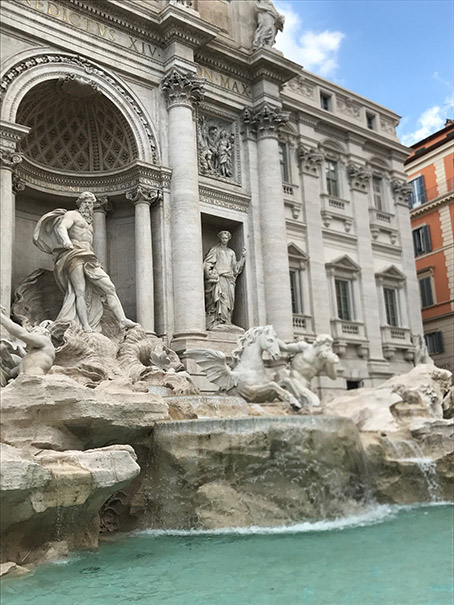
April 19, 2019 How is Rome paying for its preservation projects?
HBI’s Shaurya Batra returned from vacation in Rome, a trip which got him thinking about historic preservation in ancient cities. With the ever-present threat of degradation of the ancient structures, upkeep and the preservation of architecture is a constant (and costly) necessity. But when it comes down to it, who funds the work? That’s the question that comes to mind…Read below to learn more about the situation of Roman preservation and the measures the city is taking to maintain the beloved historic sites.
For people interested in art, architecture and preservation Italy is among the top destinations, if not the top destination. It is safe to say that Rome is at the heart of this nexus of Italian art, architecture and the efforts top preserve this cultural heritage.
Rome is home to 574 archaeological areas. These archaeological areas include over 400 monumental fountains and over 900 sacred monuments. After London and Paris, Rome is the third most visited city in Europe and received around 10 million tourists in 2017. The same year, international tourists added €41.3 billion to the Italian economy, equivalent to boosting the GDP by 1.5 percent. Italy’s cultural attractions were the main moneymakers, bringing in about €15.5 billion. Rome, Italy’s biggest destination, received the largest share of this tourism income. In 2017, the Italian capital’s tourist takings rose by 20.3 percent over the previous year, to €6.74 billion.

Despite the increasing tourism income, the city of Rome is in the red. At the end of 2016, Rome’s debt figures stood roughly around in €15 billion. As one of her first acts upon election, Virginia Raggi, the incumbent mayor of Rome, announced that the city would not bid for the 2024 Olympic Games due to its financial condition. The same year, the Commissioner of Roma Capitale urged individuals and private business to pledge €500 million euros ($550 million) for around 100 archaeological sites and monuments in the city. Of that figure, €178 million alone is required just to keep Rome’s monuments in tolerable condition, with the remainder set aside for improvements.
These contributions are sought and made under a tax credit program of the Italian government called the Art Bonus Act. Started in 2014, the Art Bonus program allows a tax credit equal to 65 % of charitable contributions that individuals, non-profits or companies make in favor of :
- Maintenance, protection and restoration of public cultural works (eg. monuments, historic buildings, works of art);
- Support of public cultural institutions (eg. museums, libraries, archives, archaeological areas and parks), opera/symphonic foundations and traditional theater;
- Restoration and upgrading of facilities of public institutions dedicated to performances.

The program has been successful in attracting investments for major tourist attractions. After seventeen months of pennies landing on dry stone, water flowed again at the famed Trevi fountain. The latest renovation courtesy of the renowned fashion label Fendi. Fendi spent almost $2.5 million under the Art Bonus program, all of it dedicated to the fountain. Less than half a mile away, another tourist hot-spot, the Spanish Steps, were closed for a year for renovation. The $2 million restoration is funded entirely by the prominent Italian jewelry brand Bvlgari (Bulgari), which runs its flagship Rome location merely a few steps from the famed staircase. Another famous Italian brand, Tod’s, paid roughly $30 million for maintenance and rehabilitation works at the Colosseum. In addition to the tax credits, these sponsors get a courtesy plaque and the publicity.
Rome was not built in a day and is now rebuilding itself one sponsor at a time.



